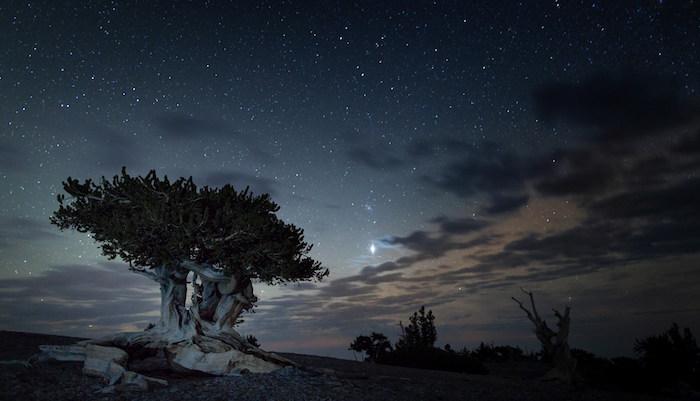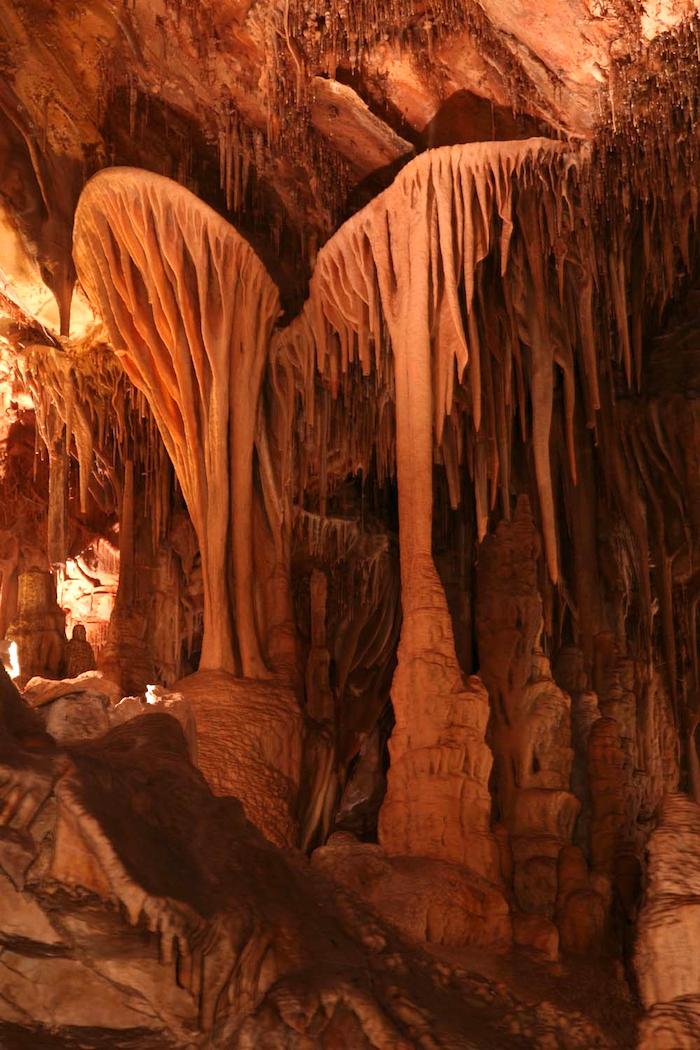
Great Basin is renowned for both its night skies and bristlecone pines/NPS
Big trees, big mountains, and even a big cave greet those who head off the beaten track to Great Basin National Park in Nevada not far from the Utah border.
Though this is a park that a former congressman from Utah said wasn't worth more than one visit in a lifetime, his view isn't shared by all. Last year nearly 170,000 people visited Great Basin. Sure, some parks see that many visitors in two weeks (Rocky Mountain National Park averaged 92,442 visitors a week last year), but Great Basin takes some effort to reach. And for those who do, that effort is worth it.
For those who don't know, Great Basin started out life in the National Park System as Lehman Caves National Monument by presidential proclamation on January 24, 1922. Congress turned it into a national park on October 27, 1986, expanding it to include a huge chunk of surrounding national forest and BLM lands.
Great Basin's gateway town is Baker, Nevada. Once upon a time there was almost nothing there. But now, as more and more visitors discover Great Basin, changes are becoming more and more apparent. There is a campground with RV hookups. A couple of small stores and eateries have popped up along with some limited lodging. Where it was once possible to easily find a vacant campsite, it’s becoming a challenge.
Baker is a reflection of the very remote land in which it lies. The Snake Valley has always been sparsely populated. It still is. The nearest towns are Ely, Nevada, 68 miles west, and Delta, Utah, which is 106 miles to the east.
The park's biggest claim to fame, PR-wise, came in late 2014, when a 132-year-old Winchester rifle was found leaning up against a well-weathered juniper in the park's backcountry. While the rifle's serial number was readable, an investigation never determined who might have owned the gun or why it was left in the outback. What the folks at the Buffalo Bill Center of the West in Cody, Wyoming, where the rifle was shipped for some restoration, do know is that, “The Winchester Model 1873 alone may be the most iconic western firearm of all time. This is especially true of its marketing slogan, ‘The Gun that Won the West.’ With all it’s been through, this particular gun has certainly carried on that legend.”

The Parachute Shield formation in Lehman Caves at Great Basin National Park/NPS
You can see the rifle in the park's visitor center, but don't forget to explore the cave system at Great Basin or head out onto the landscape.
Lehman Caves is named for Absalom Lehman, who had a ranch in the area and stumbled upon the cave back in April 1885. Over the years, Lehman Caves -- which actually is a single cave, not a series of caves -- gradually grew in notoriety. The cave played host to visitors who took part in guided tours, as well as more hardy explorers. Local people are even said to have taken some of the cave's formations as far away as the Reno state fair. Lehman the man, however died in 1891, before he saw his cave gain the national spotlight.
The boundaries of Great Basin actually encompass more than 40 caves. But the main attraction is Lehman Caves. This is an unusual "marble" cave system. Along with the somewhat common cave popcorn, soda straws, flowstones, stalactites, stalagmites, and helictites, you'll also find several hundred rare shield formations.
A tour of the cave is one of the main reasons folks travel to Great Basin. Another is 13,063-foot Wheeler Peak and the bristlecone pines that grow upon it. It's said that some of the bristlecones are 5,000 years old.
Bristlecone pines in Great Basin National Park grow in isolated groves just below treeline. Conditions are harsh, with cold temperatures, a short growing season, and high winds. Bristlecone pines in these high-elevation environments grow very slowly, and in some years don't even add a ring of growth. This slow growth makes their wood very dense and resistant to insects, fungi, rot, and erosion. Vegetation is very sparse, limiting the role of fire. Bristlecone pine seeds are occasionally cached by birds at lower elevations. Bristlecone pines grow more rapidly in more "favorable" environments at lower elevations. They do not achieve their legendary age or fascinating twisted shapes. -- National Park Service

Wheeler Peak, Great Basin National Park/NPS
Set in the heart of the Great Basin, the mountain and its park are an anomaly in this desert landscape. Climb onto Wheeler’s flanks and you’ll find shimmering alpine lakes cupped by rocky cirques and dense forests of aspen and conifers. You'll also have roughly 60 miles of backcountry trails for backpacking or day hikes.
Perhaps because the park is three hours by car from Salt Lake and five from Las Vegas, you'll also enjoy dark night skies not affected by light pollution, as well as crystal-clear air.
When planning a trip to Great Basin, consider reserving your cave tour before you reach the park. If you like to camp, there are five developed campgrounds to choose from, with reservations available only at the Grey Cliffs Campground. Each developed campground -- Upper Lehman Creek, Lower Lehman Creek, Baker Creek, Grey Cliffs, and Wheeler Peak -- has vault toilets, picnic tables, tent pads, and campfire grills. There are no hookups. Each campsite is limited to eight people, three tents, and two vehicles. There are three campgrounds with accessible sites. Primitive campgrounds can be found along Snake Creek and Strawberry Creek roads.
Lower Lehman Creek is the only campground open year-round. Other campgrounds are generally open May through October, weather permitting. Water may not be available early or late in the season.
If you're coming to enjoy the night skies, the park's astronomy program days are typically offered April through October on Saturday nights, with additional Tuesday and Thursday night programs during the summer season. This summer's astronomy programs are currently every Tuesday, Thursday, and Saturday at 8:30 p.m. Be sure to check the park's website to see if any changes have been made.



Comments
That's the truth. I was there last month, arriving around 3 pm. We asked at the Vistor Center in Baker and were told that they were unlikely to fill up that night. We went immediately to Lower and Upper Lehman Creek campgrounds, and both were full. We headed over to Baker Creek, and there were only 2 vacant sites.
Just an FYI: Strawberry Creek Campground has been closed for a couple of years. A very hot fire went through, scorching the soil, and the park has been doing habitat restoration ever since.
Its best to show up at 11 to 12 to look for a camping spot. 80% of the people stay one night then take off is what i noticed. Amazing park. Wish you could camp at the alpine lakes other than that a must go. Youl love it